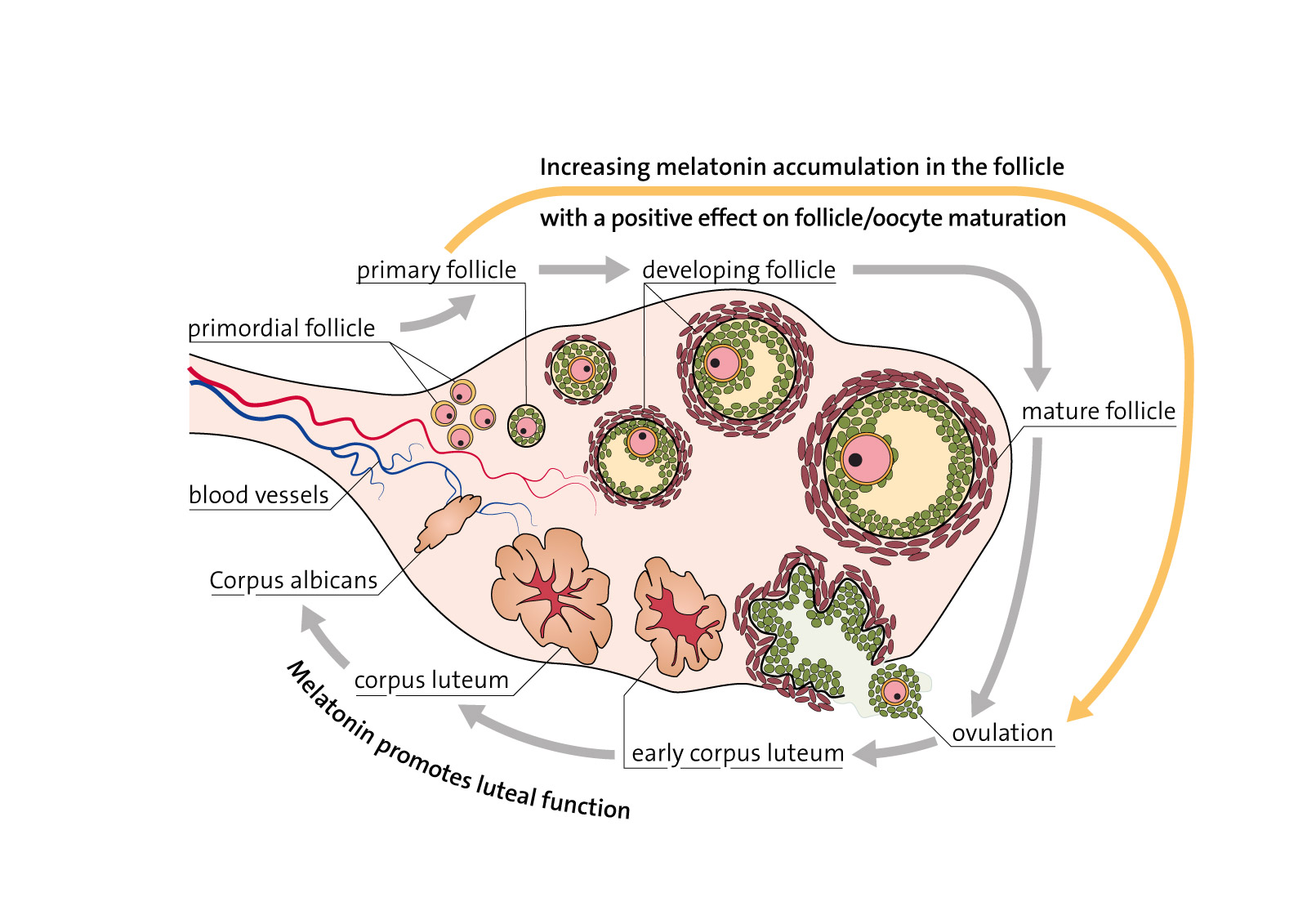Objective
To summarize the role of melatonin and circadian rhythms in determining optimal female reproductive physiology, especially at the peripheral level.
Design
Databases were searched for the related English-language literature published up to March 1, 2014. Only papers in peer-reviewed journals are cited.
Setting
Not applicable.
Petient(s)
Not applicable.
Intervention(s)
Melatonin treatment, alterations of the normal light:dark cycle and light exposure at night.
Main Outcome Measure(s)
Melatonin levels in the blood and in the ovarian follicular fluid and melatonin synthesis, oxidative damage and circadian rhythm disturbances in peripheral reproductive organs.
Result(s)
The central circadian regulatory system is located in the suprachiasmatic nucleus (SCN). The output of this master clock is synchronized to 24 hours by the prevailing light-dark cycle. The SCN regulates rhythms in peripheral cells via the autonomic nervous system and it sends a neural message to the pineal gland where it controls the cyclic production of melatonin; after its release, the melatonin rhythm strengthens peripheral oscillators. Melatonin is also produced in the peripheral reproductive organs, including granulosa cells, the cumulus oophorus, and the oocyte. These cells, along with the blood, may contribute melatonin to the follicular fluid, which has melatonin levels higher than those in the blood. Melatonin is a powerful free radical scavenger and protects the oocyte from oxidative stress, especially at the time of ovulation. The cyclic levels of melatonin in the blood pass through the placenta and aid in the organization of the fetal SCN. In the absence of this synchronizing effect, the offspring may exhibit neurobehavioral deficits. Also, melatonin protects the developing fetus from oxidative stress. Melatonin produced in the placenta likewise may preserve the optimal function of this organ.
Conclusion(s)
Both stable circadian rhythms and cyclic melatonin availability are critical for optimal ovarian physiology and placental function. Because light exposure after darkness onset at night disrupts the master circadian clock and suppresses elevated nocturnal melatonin levels, light at night should be avoided.
